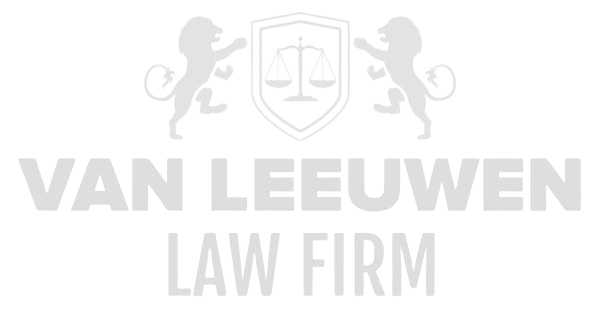Every organization can face a profound crisis that severely tests its foundations. Such crisis situations are not merely business setbacks but significant events that deeply impact continuity, reputation, and trust both within and outside the company. The nature of the crisis—often involving revelations of fraud, corruption, money laundering, bribery, violations of international sanctions, or other financial mismanagement—brings an acute and multidimensional threat. These accusations are not just legal issues but pose an existential threat to the organization’s survival. The immediate consequences are far-reaching: reputational damage that can destroy years of built-up goodwill, mass withdrawal of investors and customers, and stricter regulatory measures that restrict operational freedom. All this can lead to financial disruption and loss of market share. In this turbulent context, the ability to respond adequately and purposefully is vital, as the difference between surviving and perishing lies in the quality of crisis management and resilience.
Dealing with such a crisis requires more than an ad-hoc reaction. It demands a strategic approach that integrates the various dimensions of the problem—legal, operational, financial, and communicative—with a long-term focus. The first step is to prevent panic and chaotic responses that could worsen the situation or unnecessarily increase legal risks. Instead, it is essential to quickly activate a multidisciplinary team equipped with the right legal knowledge, forensic expertise, and communication skills. This team must immediately start securing evidence, conducting in-depth internal investigations, and drafting a transparent, controlled communication and recovery strategy. This approach is crucial to maintaining and, where possible, restoring trust among customers, investors, regulators, and other stakeholders. At the same time, the crisis should be used as a moment for reflection and reform, critically reviewing existing governance and compliance structures and fundamentally revising them where necessary. Only in this way can the organization not only overcome this crisis but also emerge stronger, more resilient, and future-proof.
Crisis Response & Incident Management
Effective crisis response begins with the immediate activation of a multidisciplinary crisis management team with expertise in criminal and administrative law aspects of fraud, corruption, and other serious financial misconduct. This team must operate in a structured and goal-oriented manner, with all involved disciplines—legal, forensic, communication, and compliance—working closely together to quickly gain an overview of the situation. Developing and implementing clear protocols is crucial, ensuring that both internal and external communication are streamlined and controlled. Uncontrolled information dissemination can lead to image damage and legal complications. The protocol must also include scenarios for interaction with regulators and judicial authorities, who are often involved early in serious allegations of financial mismanagement and criminal offenses. The management of the first days and weeks of a crisis largely determines the final outcome and recovery process.
Within incident management, ensuring an unbroken chain of evidence is essential. This means careful handling of the collection, securing, and analysis of digital and physical documents, correspondence, and other forms of evidence. This material forms the basis for both internal evaluations and potential legal proceedings. Through a systematic and methodical approach, the integrity of the evidence is guaranteed, which is crucial for effective defense and recovery. It also prevents inadvertent loss or damage to evidence, which could severely harm the organization’s position.
The role of the crisis management team extends beyond the acute incident. It must also be prepared for the complexity and duration of such a crisis, where multiple legal processes may run in parallel, such as criminal investigations, administrative sanction procedures, and civil claims. This requires a flexible yet disciplined approach, continuously balancing the disclosure of information, protection of interests, and compliance with legal obligations. The degree of preparation and professionalism at this stage can be decisive for preserving reputation and operational continuity.
Protection of Leadership and Key Figures
During times of crisis, directors, compliance officers, and other key figures in the organization come under enormous pressure. These individuals are often directly charged or suspected of involvement in mismanagement, fraud, or corruption. It is therefore necessary to take swift and adequate measures to protect them from personal legal risks and reputational damage. Legal support in this context must be proactive and specialized, with attention to both criminal and civil aspects. Personal guidance is important because the stress and uncertainty surrounding the crisis lead to strategic decisions with major consequences for the company’s survival.
Moreover, it is essential to implement security measures that prevent key leadership personnel from falling victim to intimidation, reputational damage via media, or undue pressure from third parties. In an environment where media attention and public opinion often play a role, this requires an integrated approach where legal advice is combined with communication strategies that protect the personal integrity and position of key figures. This also contributes to the confidence of employees and external partners, who see that the organization carefully and responsibly supports its leaders.
The protection of leadership is also part of broader risk management and governance practices within crisis management. By anticipating legal and operational vulnerabilities in a timely manner and addressing them with expert support, the risk of crisis escalation can be reduced. This helps the organization maintain internal stability and prevents further disruptions in decision-making and execution of recovery measures.
Transparent Communication and Reputation Management
When an organization faces serious allegations, communicating a proactive and consistent message is crucial to maintaining trust. This concerns not only communication to the outside world—such as customers, investors, and the media—but also internal stakeholders like employees and shareholders. Transparency must be the guiding principle, but within the boundaries of legal protection and without compromising ongoing investigations. A well-thought-out communication strategy helps curb speculation and rumors and provides guidance during a period of uncertainty.
Engaging reputation experts specialized in crisis communication is of great importance. They bring experience in restoring trust in situations where corporate reputation has been severely damaged by financial misconduct and lawsuits. Reputation management is not a short-term activity; it requires a long-term and consistent effort aligned with the recovery process. This includes monitoring media coverage, actively managing social media, and maintaining direct contact with key stakeholders.
The impact of reputational damage runs deep and can lead to loss of customers, investor reluctance, and deteriorated relationships with regulators. By communicating transparently and thoughtfully, these negative effects can be limited, and the organization can gradually restore its integrity. The degree of success in reputation management largely determines the recovery potential and future resilience of the company.
Thorough Forensic Investigation and Evidence Management
A thorough and impartial forensic investigation forms the backbone of crisis management when facing accusations of fraud, corruption, and other financial misconduct. The investigation focuses on meticulously establishing facts, identifying responsible parties, and mapping the scope and nature of the malpractice. This requires a combination of legal, financial, and technical expertise specialized in unraveling complex structures and uncovering hidden transactions and illegal acts. Only with a solid forensic investigation can the organization determine the right next steps.
Careful management of evidence plays a central role in this process. Every document, digital data, or other form of information must be collected and preserved in a legally sound manner to withstand scrutiny in legal proceedings. This requires strict protocols and methods to ensure the authenticity and integrity of the evidence. A weak chain of evidence can undermine the trust of regulators and the judiciary and severely weaken the organization’s position.
Moreover, the forensic investigation also supports internal decision-making and compliance improvements. The findings provide clear insight into deficiencies and risks within the organization that can be addressed to prevent recurrence. This makes the investigation not only a legal necessity but also a valuable tool for strengthening the internal organization and governance.
Compliance Review and Process Optimization
After the acute crisis phase, it is essential to thoroughly review existing compliance programs and internal controls. Such accusations often point to shortcomings in internal controls and governance that laid the groundwork for the fraud or financial mismanagement. A systematic compliance review offers the opportunity to expose and eliminate weak points in policies, procedures, and execution. Superficial adjustments are not sufficient; fundamental improvement and strengthening of risk management must be pursued.
Process optimization focuses on implementing new risk-mitigating measures that comply with current laws and regulations, including international sanctions and anti-corruption provisions. This requires an integrated approach combining legal requirements with operational efficiency. By streamlining processes and automating where necessary, the organization can respond faster and more effectively to risk signals and compliance deviations. This enables the prevention of future crises while simultaneously enhancing operational capability.
In addition to technical and procedural improvements, it is also important to strengthen the compliance culture within the organization. This starts with top management and must be implemented at all organizational levels. Only with a embraced and active compliance culture can sustainable risk management and integrity be achieved. The review and optimization of compliance programs thus form a fundamental building block for the company’s recovery and future resilience.
Financial Stabilization and Damage Limitation
The aftermath of serious allegations such as financial mismanagement, fraud, money laundering, or corruption often brings acute financial uncertainty. This uncertainty can manifest in the withdrawal of credit facilities, the exit of investors, and reduced liquidity that threatens operational continuity. Financial stabilization must therefore be treated as a priority to protect the organization’s core activities and prevent further escalation. This requires a thorough analysis of the financial position, focusing on restructuring obligations and coordinating payment arrangements with creditors and financial institutions.
It is also essential to protect assets from seizure, attachment, or other forms of asset deterioration. In the context of fraud and corruption cases, authorities often impose strict measures, such as freezing accounts or applying sanctions. By developing legal and financial strategies in a timely manner, the risk of irreparable financial damage can be mitigated. This may include managing high-risk assets separately or restructuring ownership arrangements within the limits of the law.
Damage limitation also involves ensuring operational continuity so that the organization can continue its services and avoid unnecessarily harming customer relationships. By formulating a careful action plan that balances financial stability and business operations, the crisis can be prevented from escalating into an existential threat. This requires close collaboration between legal, financial, and operational disciplines that can jointly implement appropriate measures in a complex and dynamic situation.
Restoration of Internal Culture and Ethics
One of the most profound consequences of allegations of fraud, corruption, or financial mismanagement is the disruption of internal organizational culture. Trust, transparency, and integrity are heavily undermined, leading to uncertainty, fear, and reduced employee engagement. Restoring a healthy culture is therefore fundamental to the sustainable recovery of the organization. This process requires a deep cultural transformation in which transparency, accountability, and ethical behavior are central.
The recovery process begins with acknowledging mistakes and being open to change, which must translate into concrete actions and behavioral changes at all organizational levels. Cultural transformation initiatives typically include intensive training and awareness programs that educate employees on new norms and codes of conduct, while also facilitating dialogue about values and expectations. Only through a broadly supported and transparent process can integrity be restored and strengthened.
Additionally, mechanisms must be implemented to continuously monitor ethical behavior, such as whistleblower systems, ethics committees, and periodic cultural assessments. These tools ensure lasting awareness and help prevent future breaches of integrity. In doing so, the organization builds a resilient culture capable of withstanding internal and external pressures, forming the foundation for the trust of employees, customers, and other stakeholders.
Strategic Repositioning and Innovation
The impact of a crisis caused by serious allegations goes beyond damage recovery; it also challenges the organization to determine its future direction. Strategic repositioning is indispensable in this context. This entails a critical evaluation of the existing business model, market position, and competitive advantages. The crisis can highlight fundamental weaknesses while also revealing new opportunities that were previously untapped.
Investing in innovation and developing new market opportunities plays a central role in securing sustainable growth after a crisis. Innovation need not be limited to technological advancements; it also includes process optimization, product development, digitalization, and entering new geographic markets. By focusing on progress and renewal, the organization can strengthen its competitive position and regain the trust of customers and investors.
Successful repositioning requires senior management to develop a clear and inspiring vision that is embraced throughout the organization. This vision must be realistic and aligned with changing market and societal conditions, including stricter regulations and higher standards regarding integrity and transparency. In this way, the crisis is seen not merely as a threat but as an opportunity to make the organization future-proof.
Strengthening Stakeholder Relationships
During a crisis, existing relationships with customers, investors, regulators, and other stakeholders are severely tested. Trust can quickly diminish, and the willingness to engage in business may drop sharply. It is therefore crucial to actively and purposefully invest in strengthening these relationships. Open and constructive dialogue is essential, meaning that stakeholders should be regularly informed about the progress of recovery measures, mistakes should be acknowledged, and plans for future risk management and governance should be shared.
Building and maintaining trust also requires demonstrating consistent behavior and honoring commitments. In situations where legal proceedings are ongoing, this requires a delicate balance between transparency and protecting confidential information. By actively involving stakeholders in the recovery process, a sense of engagement and shared responsibility is created, laying the foundation for a sustainable relationship.
These strengthened relationships are important not only to mitigate reputational damage but also to reinforce the organization’s strategic position. Investors are more likely to participate in restructurings or new initiatives, customers remain loyal, and regulators become partners in the improvement process. This network of trust forms a crucial foundation for the organization’s future success.
Future-Proof Governance and Risk Management
One of the most essential lessons from crises involving financial mismanagement and breaches of integrity is the importance of robust governance structures. Future-proof governance ensures that the board, supervisory bodies, and management effectively and transparently oversee policies and risks within the organization. This requires clear responsibilities, well-defined reporting lines, and a culture of accountability at all levels.
Risk management must also be proactive and continuous, with risks systematically identified, assessed, and monitored. This applies not only to financial risks but also to reputational, legal, and operational risks. Crisis plans should be regularly updated and tested to ensure readiness for new threats. This integrated approach strengthens the organization’s resilience and significantly enhances its ability to prevent and manage future crises.
Implementing such governance and risk management mechanisms requires dedication, expertise, and discipline. It is an ongoing process that adapts to changing conditions, legislation, and market developments. Only organizations that take these steps seriously are capable not only of recovering from a crisis but also of achieving sustainable growth and regaining trust in an increasingly complex and demanding environment.









